
| Banksia Moth (also known as Danima banksiae) NOTODONTINAE, NOTODONTIDAE, NOCTUOIDEA | donherbisonevans@yahoo.com) and Stella Crossley |
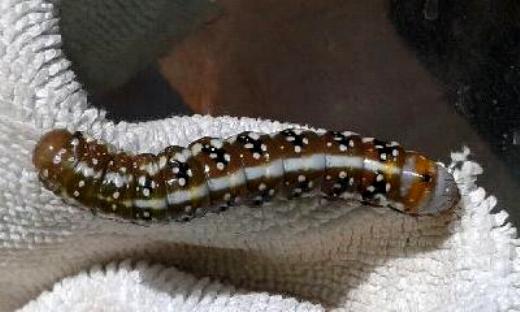
(Photo: incognito, Queensland)

| Banksia Moth (also known as Danima banksiae) NOTODONTINAE, NOTODONTIDAE, NOCTUOIDEA | donherbisonevans@yahoo.com) and Stella Crossley |

(Photo: incognito, Queensland)
This Caterpillar is brown with a white dorsal line. There are white patches on the thorax, white diagonal lines on the abdomen, and white dots all over. There is a black dorsal horn on the last abdominal segment, behind which the abdomen is swollen and grey-blue in colour.
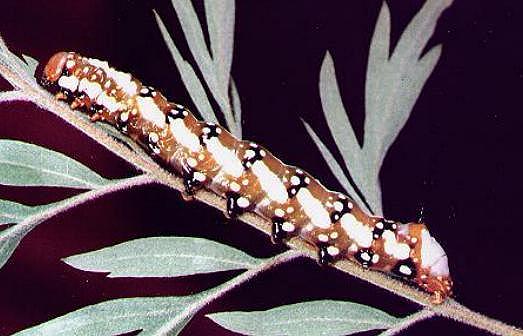
The caterpillar lies along a twig or leaf when feeding and resting.
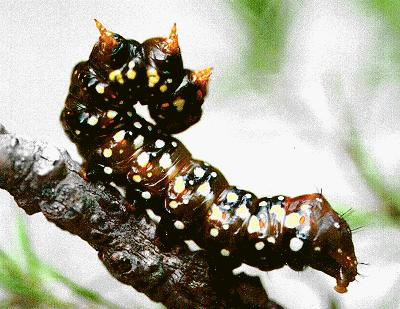
When disturbed, the head and thorax are raised so that the true legs are pointed forwards. The rear end may also be raised, and then the body is 'U' shaped, with the prolegs pointing backwards.

When threatened, the caterpillar also projects a pair of fleshy organs from under its prothorax. These are dark red and forked at the tip.
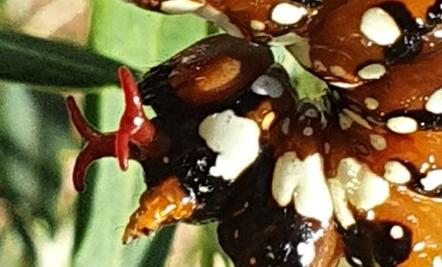
The caterpillars feed on the leaves of various members of the plant family PROTEACEAE, including:
The caterpillar grows to a length of 6 cms.
It pupates in a cocoon in the ground litter. Specimens which pupated in November in Melbourne emerged as adults four weeks later.
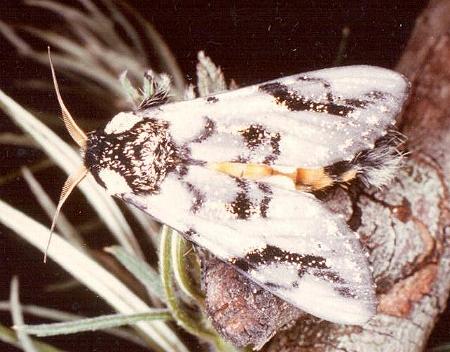
The forewings of the adult moths vary in colour from grey to brown, with black markings and white speckles. The forewings and thorax are covered with dust-like white speckles. The thorax also has a conspicuous pair of white spots.

The prothorax is white, and the rest of the thorax is black. The abdomen is orange with a dark grey anal tuft. The females have grey hindwings. The males have yellow hindwings. The moths have a wingspan of about 6 cms.
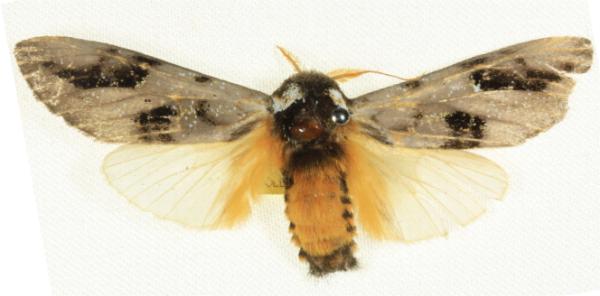
When disturbed: the moth adopts a characteristic posture. It lifts the wings, and curves the abdomen underneath the body, displaying rings on the abdomen and red structures near the tail.
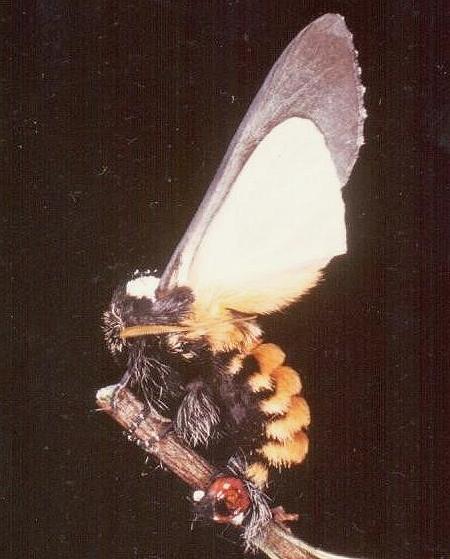
The eggs are white and dome shaped, and laid on the surface of a leaf of the food plant. Eggs laid in April in Melbourne took six days to hatch.
The species is found over the whole of Australia, including:

Further reading :
David Carter,
Butterflies and Moths,
Collins Eyewitness Handbooks, Sydney 1992, p. 247.
Ian F.B. Common,
Moths of Australia,
Melbourne University Press, 1990, pls. 17.2, 29.14, p. 420.
Margaret Greenway,
The tale of Two Travelling Caterpillars,
Butterflies and Other Invertebrates Club,
Metamorphosis Australia,
Issue 63 (December 2011), pp. 18-20.
John William Lewin,
Prodromus Entomology,
Natural History of Lepidopterous Insects of New South Wales,
London : T. Bensley (1805), p. 10, and also
Plate 9.
Peter B. McQuillan, Jan A. Forrest, David Keane, & Roger Grund,
Caterpillars, moths, and their plants of Southern Australia,
Butterfly Conservation South Australia Inc., Adelaide (2019), pp. 4-5, 143.
Peter Marriott,
Moths of Victoria: part 2,
Tiger Moths and their Allies - Noctuoidea (A),
Entomological Society of Victoria, 2009, pp. 8-9, 14-15.
Buck Richardson,
Tropical Queensland Wildlife from Dusk to Dawn Science and Art,
LeapFrogOz, Kuranda, 2015, p. 176.
 caterpillar |  butterflies |  Lepidoptera |  moths |  caterpillar |
(updated 1 August 2010, 28 January 2025)